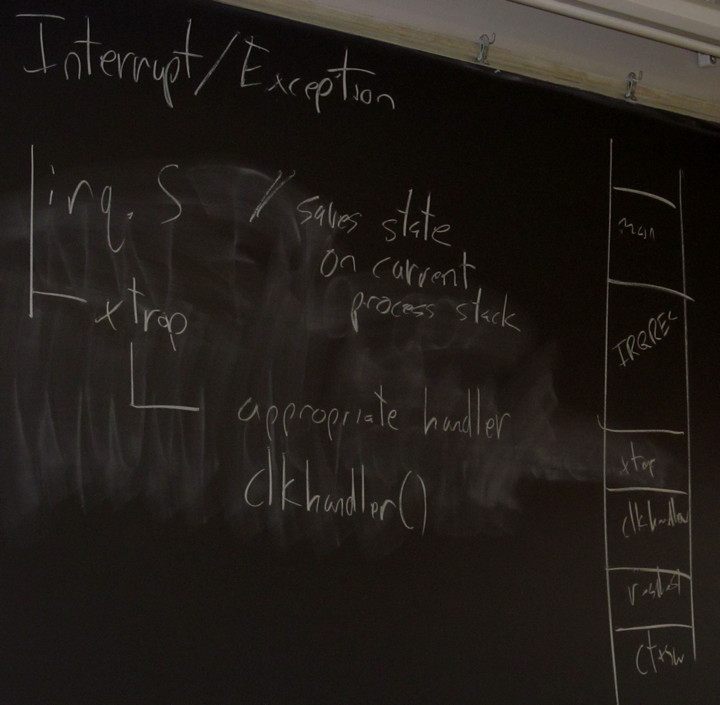 |
Submit: Turn in your source code using the turnin command on the lab machines. Please turn in only the files system/create.c, system/ctxsw.S, and system/testcases.c . Work should be completed in pairs. Be certain to include both names in the comment block at the top of all source code files. It would be courteous to confirm with your partner when submitting the assignment.
Preparation First, make a copy of your Project 4 directory: New files:
The create() and ctxsw() functions are incomplete and must be filled in. The major locations are marked with "// TODO... ." File system/testcases.c contains code to test your create() and ctxsw() with three processes, each of which prints a process ID and then yields. Once your creation and context switch functions are working, you will see these three processes take turns running on multiple cores.
Some Assembly RequiredAn operating system's context switch function typically must be written in assembly language because the low level manipulations it performs are not modeled well in higher-level languages. If you have not worked in ARM assembly language before, there are many helpful resources available online. Despite its low-level nature, a context switch does not require complex instructions. Our context switch can be completed using only arithmetic opcodes, and the load (ldr), store (str), and move (mov) opcodes. Please refer to ARM Information Center for a useful explanation of general ARM syntax. Note: The Raspberry Pi 3 Model B+ is equipped with a ARM Cortex A-53 processor, which implements the ARMv8-A instruction set. While it is 64-bit-capable, XINU uses its 32-bit instruction set for simplicity.
TestingThe default test case provided with the tarball is necessary, but not sufficient. Just because it switches between a handful of identical processes does not guarantee correctness. In embedded systems, details matter. (A LOT!) Students in previous terms have found that subtle bugs in this phase of the term project were responsible for nightmares weeks and months down the line. Test your code thoroughly:
You have a working I/O driver, and a kprintf() function for formatted output. Use these to explore every aspect of the operating system structures you are building.
Questions on this project
Photos from 2017:Photos from the projected screen differ markedly because I am adjusting them to be as readable as I can. I am experimenting/learning image "enhancement" techniques (using Gimp). I am not trying for a photo-realistic image of the screen. Any suggestions you have for making these photos more useful to you are welcome.
Photos from 2012:
|
| Marquette University. Be The Difference. | Marquette | Corliss | |


